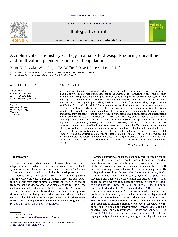摘要
Insects may adopt a range of strategies such as diapause, migration and phenotypic plasticity to achieve maximal survival and reproduction in response to the environment. However, the phenotypic plasticity of voltinism in local populations of biological control agents is still poorly understood, making evaluation of biological control efficiency difficult. Here we report our two years' work on a parasitic wasp, Platygaster demades Walker (Hymenoptera: Platygasteridae), a parasitoid of apple leaf-curling midge, Dasineura mali Kieffer (Diptera: Cecidomyiidae). P. demades produces aestivating and non-aestivating phenotypes at the embryonic stage over the season. It regulates the frequency and duration of aestivating phenotypes from the late spring to mid autumn and adjusts the embryonic developmental rate of non-aestivating phenotypes from the early to late autumn, producing univoltine, bivoltine, trivoltine and quadrivoltine phenotypes over the season. The regulation of aestivation frequency and duration is a temporal risk-spreading strategy for maximal survival, i.e., when the future food source is expected to be short the wasp regulates its population by entering aestivation in a frequency and duration concordant with the expected scale and duration of food shortage to avoid massive mortality. This strategy helps maintain a large overwintering population size for the next season. The adjustment of the embryonic developmental rate for the non-aestivating phenotype from the early to late autumn is an adaptive developmental strategy for maximal synchronization with the host, D. mali, i.e., the later the D. mali larvae become mature, the faster the parasitoid embryos develop. This strategy ensures that both aestivated and non-aestivated individuals reach a complete synchronization with the emergence of their hosts in the next spring.
- 出版日期2010-9
